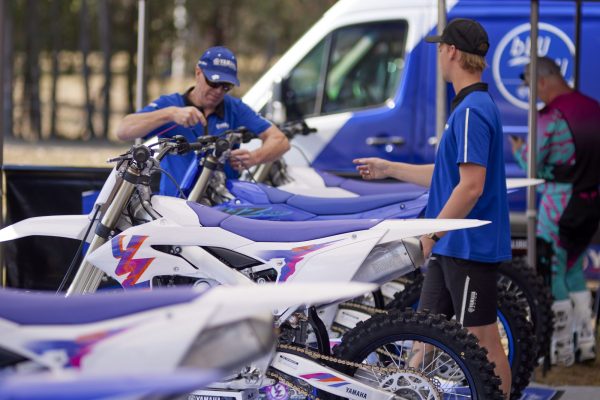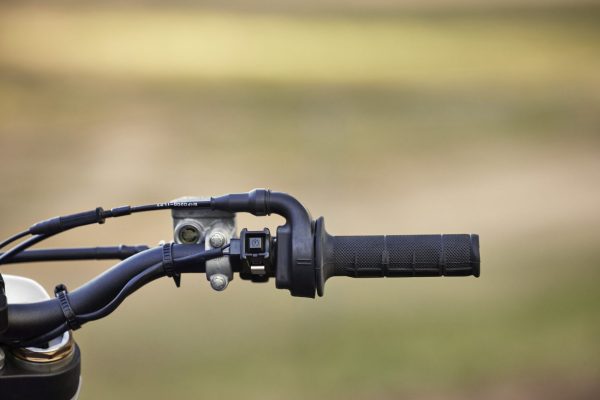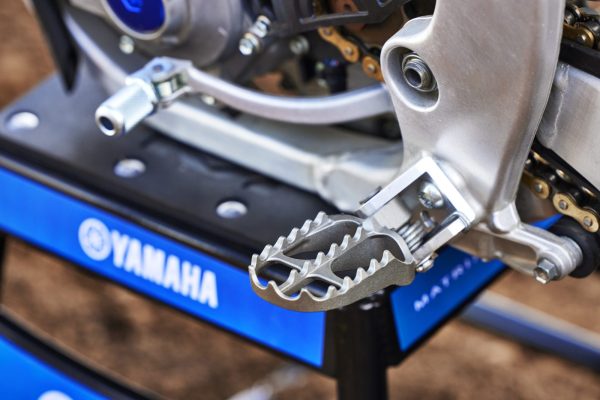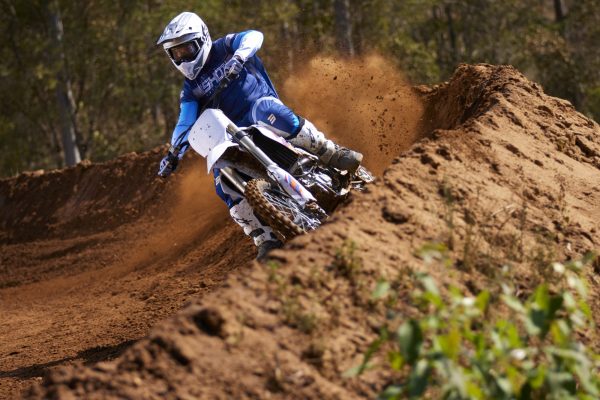Every update on the 2024 Yamaha YZ250F is for a reason and Yamaha have spent the time to test it and get it right before it becomes available to the public.
The engine in the 2024 Yamaha YZ250F has only received small refinements from due to it already being a powerhouse. If you are familiar with the YZ engines then you’ll know that there have been some cam chain durability issues in the past. To counter this Yamaha gave the new 24 model a new 1.95mm wider low-friction cam chain. To also suit the new wider chain they fitted wider cam gears and cam chain guides while also updating the cam chain adjuster all in the name of extra durability.

Also new is a high flow intake. The air intake has done away with the air ducts and the air is now drawn in around the seat, radiator shrouds and tank. The air box is located lower for a flatter seat profile. The 3D dome shaped filter now has 56% more surface area as well as the clean side of the air boot has had its capacity increased by 30%.
The ECU is now more compact and is 15mm shorter while now being compatible with the new Power Tuner App and the engine mapping has been optimised to suit the new air intake system. Lastly the wiring harness has been simplified and had its length and weight reduced.

Steering and Handling
The 2024 Yamaha YZ250F gets the bilateral beam frame the same as the 450. The tank to head rail pipe joint has been lowered 15mm, the tension pipe has been lowered 15mm at the down tube and the rigidity has been increased in the down tube, swingarm pivot and foot peg cross members. The engine mounting brackets have been tuned to the frame and made 3mm thinner but stepped. The new subframe is lighter weighing 135 grams less by making the lower rails 0.3mm thinner.
The new battery tray supports the seat and electrical components and mounts the battery flat under the seat. The forks and shock have received new internal settings to match the new frame and the forks have received new tool-less compression adjusters. The fork guards have increased their coverage as they now wrap further around the fork legs and the dust seals have had the lip size increased 1.5mm for better life.
Other refinements are a new rear brake line for improved controllability and the rear axle size increased from 20 to 20.5mm and the foot peg brackets have been changed from steel to aluminium. The entire bike is now roomier with a new rider triangle and plastics. The radiator shrouds are 50mm narrower and the fuel tank is 6mm narrower. The seat is 15mm flatter and 5mm taller while the foot pegs are 5mm lower and 5mm further back and the bar position is now one position rearward compared to the 2023 model. The plastics while being all new now has the front number plate integrated into the front mudguard and the front brake line is now situated behind the front number plate with clearly marked routing points for all the cables and wiring.

Are They Any Good?
Yamaha aren’t just throwing updates at us for the sake of it. Everything they are doing is developed and tested and isn’t put into production unless they see a viable reason for it. Yamaha Japan runs a big racing effort where they don’t have a production rule and are able to compete on prototypes that aren’t available to the public yet. This means all the updates we see on a current model are generally tested in a racing environment for a period of time before we see them put into production.
Every update is for a reason and Yamaha have spent the time to test it and get it right before it becomes available to the public. They already have an extremely strong 250F engine so instead of overhauling the entire engine for something new they made updates to make it more reliable while improving the intake track to boost the already impressive top end. The chassis in the 250F has already been in production for over a year in the YZ450F so we know it works. They have just fine tuned the YZ450F chassis to work with the YZ250F engine and now we have the most race ready YZ250F that we have ever seen.

The top end power is now better than ever with the new intake system. This bike is made to rev and the harder you rev it the more power produces. The standard mapping does favour someone who will work the gearbox and keep the bike high in the rev range. If that isn’t you then you can change the mapping so the bike is more revvy off the bottom to ride lower in the rev range.
I tried to make the bike snappier off the bottom using the Power Tuner App but being a bigger guy on a 250F I found it easier to ride at the bikes strengths, keep the motor revving and use the gearbox to keep in the meat of the power. The clutch has a really nice and precise feel but after spending time on bikes with hydraulic clutches it does feel a little antiquated to go back to a cable. Having to adjust the clutch free play when the clutch gets hot can be a little annoying.

Apart from finding the YZ250F to have monstrous power through the midrange and top end I did happen to find the new airbox much quieter and didn’t notice that sucking noise that used to be present on the YZ’s. It never seemed to worry me but the anti-YZ brigade used to harp on about it all over internet forums so now I can announce to their dissatisfaction that noise is all but gone.
The entire world already knew the YZ250F was fast. If you didn’t then you must have your head under a rock. The big question was how the new chassis was going to feel.

The old chassis was very plush and comfortable which made the YZ250F very easy and enjoyable to ride. Improving on that was always going to be tricky. Yamaha have managed to make the new 24 YZ250F corner better than it ever has before.
It’s still balanced and stable at speed but tips into ruts very easily. So much so that I found when running a sag height on the rear shock of 105mm I had to slide the front forks down through the triple clamps a few millimetres to make the front end higher and stop it tipping in so fast because I was not used to such sharp cornering characteristics from a YZ.
The YZ now feels like a very slim, light and nimble bike to ride. There is so much room in the cockpit, even for me who is six feet tall. I feel the new model has lost some of that soft comfortable feel for a chassis that is more precise with more feeling through the frame. The new chassis is not as comfortable through the legs and has a more rigid feel which makes it feel a more race ready bike.

It reacts so much quicker to movements on the pegs and steers and handles with much more precision. It feels like a trade-off for something that will perform better on race day at the hands of elite riders. In my opinion it is a move in the right direction.
Yamaha have a bike with not only a top level engine, but also with top of the class handling and cornering capabilities. If Yamaha get beaten anywhere around the world in 2024, it won’t be because the bike isn’t good enough.
For the full feature, check out issue #532 of ADB.
WORDS MAT BOYD || PHOTOS JOSH EVANS
